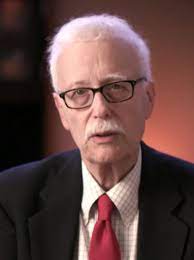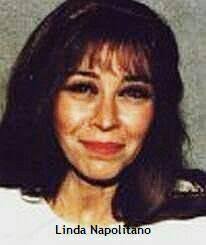by Charles Lear

Throughout the 1990s, the foremost authorities on UFO abduction research were Budd Hopkins, an artist who brought the subject to mainstream attention with the publication of his 1981 book, Missing Time, David Jacobs, an associate professor of history at Temple University who published Secret Life in 1992, and John Mack, head of psychiatry at Harvard Medical School, who published Abduction in 1994. Their books sold well, and they all spoke openly to the press and were largely responsible for getting the alien abduction phenomenon a good deal of media coverage. Even some in the scientific community, probably due to Mack’s efforts and tenure at Harvard, were willing to look at the phenomenon with an open mind, and an Abduction Study Conference was held in 1992 at the Massachusetts Institute of Technology, sponsored by a physics professor there, David Pritchard, with the help of financial backing from Robert Bigelow. Hopkins, Mack, and Jacobs were featured speakers, and Hopkins faced some public criticism during the conference regarding his methods. It wouldn’t be long before he faced even harsher criticism from within the UFO community.
Author and Journalist C.B.D. Bryan attended the Abduction Study Conference and wrote a book published in 1995, titled Close Encounters of the Fourth Kind, about his experiences there. He describes an abductee panel (page 54 of pdf) on day two of the conference, during which, a psychologist is described showing a child a set of images designed by Hopkins called the Hopkins Image Recognition Test (HIRT) for Children. These showed “Santa Claus, Batman, a clown, a policeman, a little girl, a Ninja Turtle, a little boy, a witch, and a skeleton.” According to Bryan, a tenth image showed “a typical Small Gray.” The child was said to have responded, “You know my friends!” According to Bryan, Hopkins rose to say that his cards were used with great success by mental health professionals and UFO researchers. He described one case he was working on where a young boy responded to the image of the Gray by saying “Mommy, that’s the man who comes into my room and beams me up into the spacecraft. I saw you there, too, and you were naked on a table.” According to Bryan, “several” psychologists complained during the question and answer period that the cards were “neither standardized nor scientific.”
Bryan describes three “Omnibus” Roper polls, conducted in the summer of 1991, involving 5,947 adults. Robert Bigelow made arrangements to have eleven questions created by Hopkins and Jacobs included and paid to have the results published. The questions were designed with the idea that they would indicate the likelihood that a person had had an abduction experience. The polltakers asked the subjects if certain things had occurred more than twice, once or twice, or never including: seeing a ghost, seeing a UFO, waking up paralyzed with missing time, finding “puzzling scars,” and “having vivid dreams about UFOs.”
According to Bryan, Hopkins talked about the poll at the conference and said that “2 percent of those surveyed responded ‘yes’ to four out of five indicator questions,” indicating that “3.7 million American adults might be abductees.” Bryan describes the lecture hall being in an “uproar” after the presentation. According to him, complaints included: “Your whole findings are based on the assumption that your ‘key indicators’ will strongly predict who might be abductees, and these ‘indicators’ do not have any scientific basis to suggest they are sound”; and that “no systematic pre-tests were carefully done to find out how the respondents interpret what they’ve been asked.” According to Bryan, Mack responded, “How can we get our colleagues to validate the poll when they totally reject the concept?”
 The next round of criticism Hopkins was to face would come from within the UFO community. According to Bryan, on day three, Hopkins was the first speaker after lunch and he gave a presentation titled “A Doubly Witnessed Abduction.” This was about a case he was involved in that has become known as “The Brooklyn Bridge Abduction.” The case involved a woman he referred to as “Linda Cortile” (now known to be Linda Napolitano) who claimed she was abducted by aliens who floated her out a window of her 12th floor downtown Manhattan apartment and up into their craft at 3:15 a.m. in late November 1989. What made this case unusual was that there were supposedly witnesses on the ground, two men, “Richard” and “Dan,” who came forward and identified themselves by letter and on tape over fourteen months later in February of 1991 as policemen. They later wrote that they were part of a security detail transporting UN Secretary General Javier Perez de Cuellar from a heliport in the area. Five months later in July of 1991, a woman contacted Hopkins and said she’d witnessed the abduction while driving across the Brooklyn Bridge.
The next round of criticism Hopkins was to face would come from within the UFO community. According to Bryan, on day three, Hopkins was the first speaker after lunch and he gave a presentation titled “A Doubly Witnessed Abduction.” This was about a case he was involved in that has become known as “The Brooklyn Bridge Abduction.” The case involved a woman he referred to as “Linda Cortile” (now known to be Linda Napolitano) who claimed she was abducted by aliens who floated her out a window of her 12th floor downtown Manhattan apartment and up into their craft at 3:15 a.m. in late November 1989. What made this case unusual was that there were supposedly witnesses on the ground, two men, “Richard” and “Dan,” who came forward and identified themselves by letter and on tape over fourteen months later in February of 1991 as policemen. They later wrote that they were part of a security detail transporting UN Secretary General Javier Perez de Cuellar from a heliport in the area. Five months later in July of 1991, a woman contacted Hopkins and said she’d witnessed the abduction while driving across the Brooklyn Bridge.
The case turned into a UFO soap opera that involved “Richard” and “Dan” supposedly becoming obsessed with Linda to the point where they spied on her, kidnapped her, “Dan” tried to rape her and “Richard” rescued her. “Richard” then claimed that he and Linda had been abducted since childhood, had a relationship that existed only on the alien ships, and that he was the actual father (Linda was married) of her first child. This was all reported by mail and on tape. Hopkins never actually met “Richard” or “Dan.” Patrick Huyghe wrote an article with a good summation of the case titled “The Great High-Rise Abduction,” published in Omni magazine, Volume 16, Issue 7.
There is a 1993 paper about this case titled A Critique of Budd Hopkins’ Case of the UFO Abduction of Linda Napolitano written by Joseph J. Stefula, Richard D. Butler, and George P. Hansen. According to the authors, the first of them to become acquainted with the case was Butler, who learned about it during meetings he’d been attending held by Hopkins that included both researchers and abductees. He invited Stefula to a meeting, and they both talked to Linda, gave her their phone numbers, and offered their help. Stefula, in particular, said his contacts in law enforcement could be of use to her. According to the authors, they also gave Hopkins this information.
A January 28, 1992 meeting with Napolitano, Butler, and Stefula is described where she gave them details about her case. Then, according to the authors, at a July 1992 Mutual UFO Network convention in Albuquerque, New Mexico, Stefula heard Hopkins and Napolitano speak and noted that some of the statements contradicted the information Napolitano had given during the meeting. A meeting with Hopkins at his home is said to have been arranged for October 3, 1992, after he initially declined, saying he didn’t want to talk about the case until his book was published.
The authors present the “Initial Problems With the Case” on page 10 of the paper and they include: Hopkins not having been able to interview “Richard,” “Dan,” or Perez de Cuellar; the lack of any sort of background check of the female witness on the bridge; and Napolitano’s refusal to file any sort of police report despite claiming she’d been, in the authors’ words, “kidnapped twice, nearly drowned, and further harassed.”
The authors detail their investigation on page 11 and report that they found no witnesses at Napolitano’s building despite there being a guard booth there that was manned 24 hours a day. They also found that the only heliport in the area didn’t operate at 3:15 a.m. and that “about six months previously, the heliport authorities had been approached by a man in his fifties with white hair who had made a similar inquiry. That man had asked about a UFO that had crashed into the East River.”
The authors report that at the July MUFON convention, International Director of MUFON Walt Andrus had told Stefula that MUFON had no interest in publishing anything critical of the case. They also report that on September 14, 1992, Hopkins faxed Butler a letter where he, “as a long-standing member of MUFON”, issued an “order” (his word, according to the authors) to Stefula and Butler to stop their investigation.
In the description of the October 3, 1992 meeting, Walt Andrus and Vice President of the Center for UFO Studies Jerome Clark are said to have been present. According to the authors, they learned that Hopkins had not talked to the guards and hadn’t even checked on the weather for the time in question, which is a basic procedure, especially for a MUFON investigator. According to them, when they suggested Napolitano file a police report, “ Hopkins, Andrus, and Clark appeared to literally panic at the suggestion.” They also reported that “Clark strenuously urged that outsiders cease investigations.”
In their discussion, the authors state that the “case appears beset by an overwhelming number of problems.” They describe having taken on their investigation reluctantly, not wanting to discredit UFO research, but note that more damage would be done if their misgivings were not brought up for discussion. They note that they were unprepared for the reactions of Andrus and Clark who “aggressively tried to dissuade us from continuing our investigation, and so far they have failed to publish any material critical of the case.”
They circulated their paper among the UFO community and it was posted on the UFOBBS as part of the February 1993 issue of Electronic Unidentified Flying Objects News. Also in that issue is a reply to a document Hansen circulated among the community titled “Attempted Murder vs. the Politics of Ufology: A question of Priorities in the Linda Napolitano Case.” The reply is titled “The Politics of Torquemada; or, Earth Calling Hansen’s Planet.” In the reply, Hansen is described as “short on ufological experience but long on self-righteous blather.”
It seems Hopkins was propped up by the UFO community, but his 1996 book on the case, Witnessed, received harsh treatment from critics and didn’t get a lot of press. The man making the news in abduction research at this time was John Mack, and by the time Witnessed was published he had been under scrutiny as well.
Next Week: UFO Abductology Under Attack: John Mack Under Inquiry at Harvard.